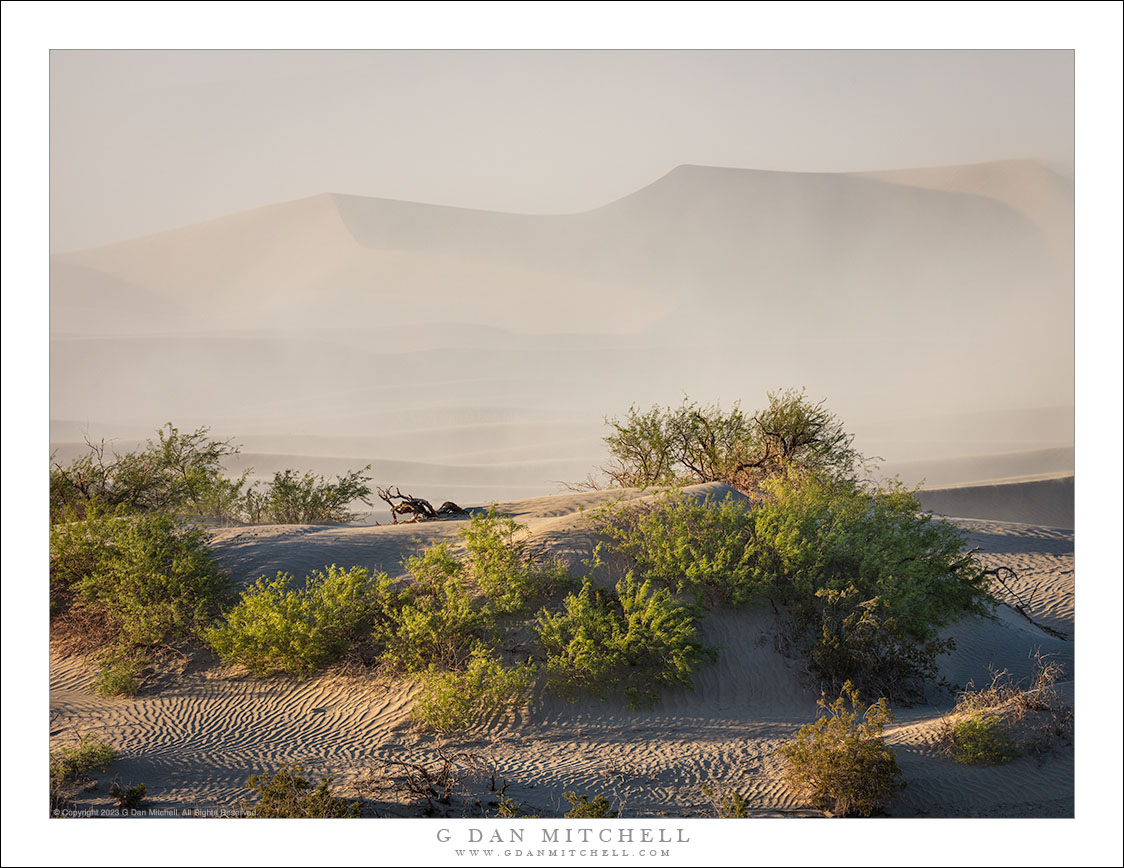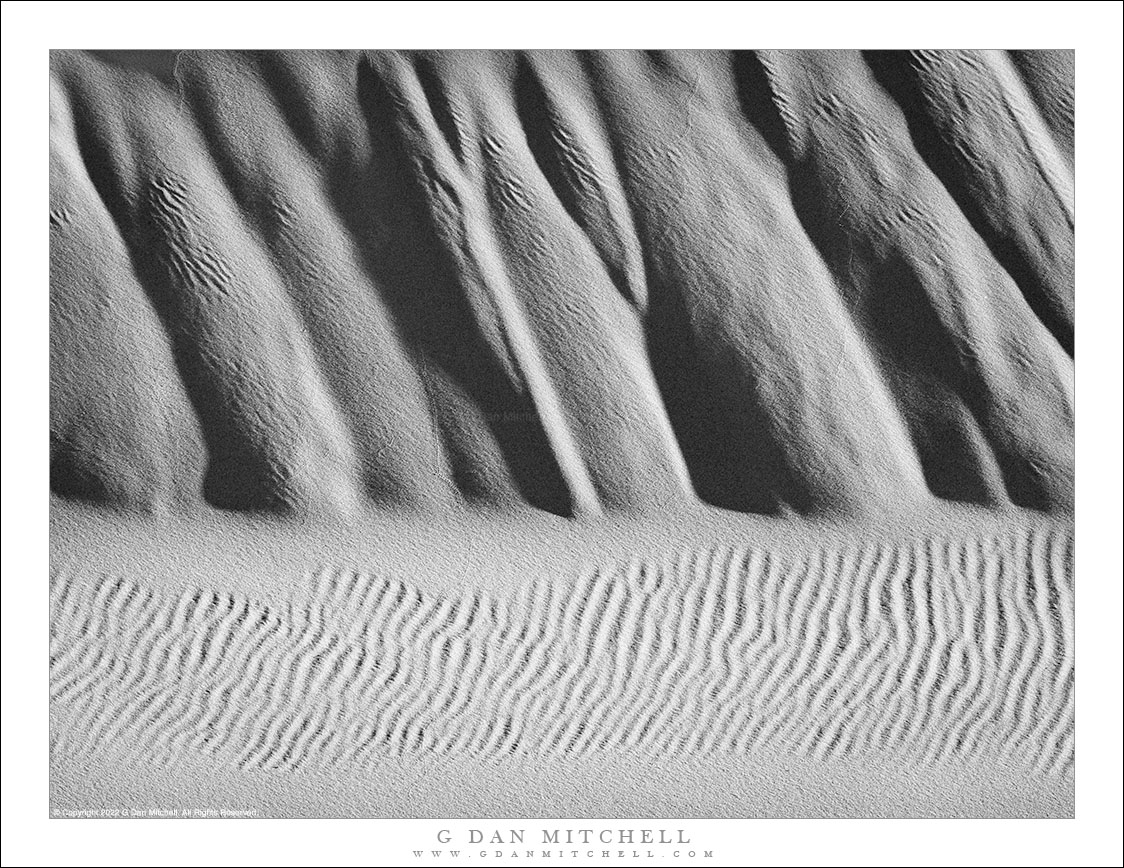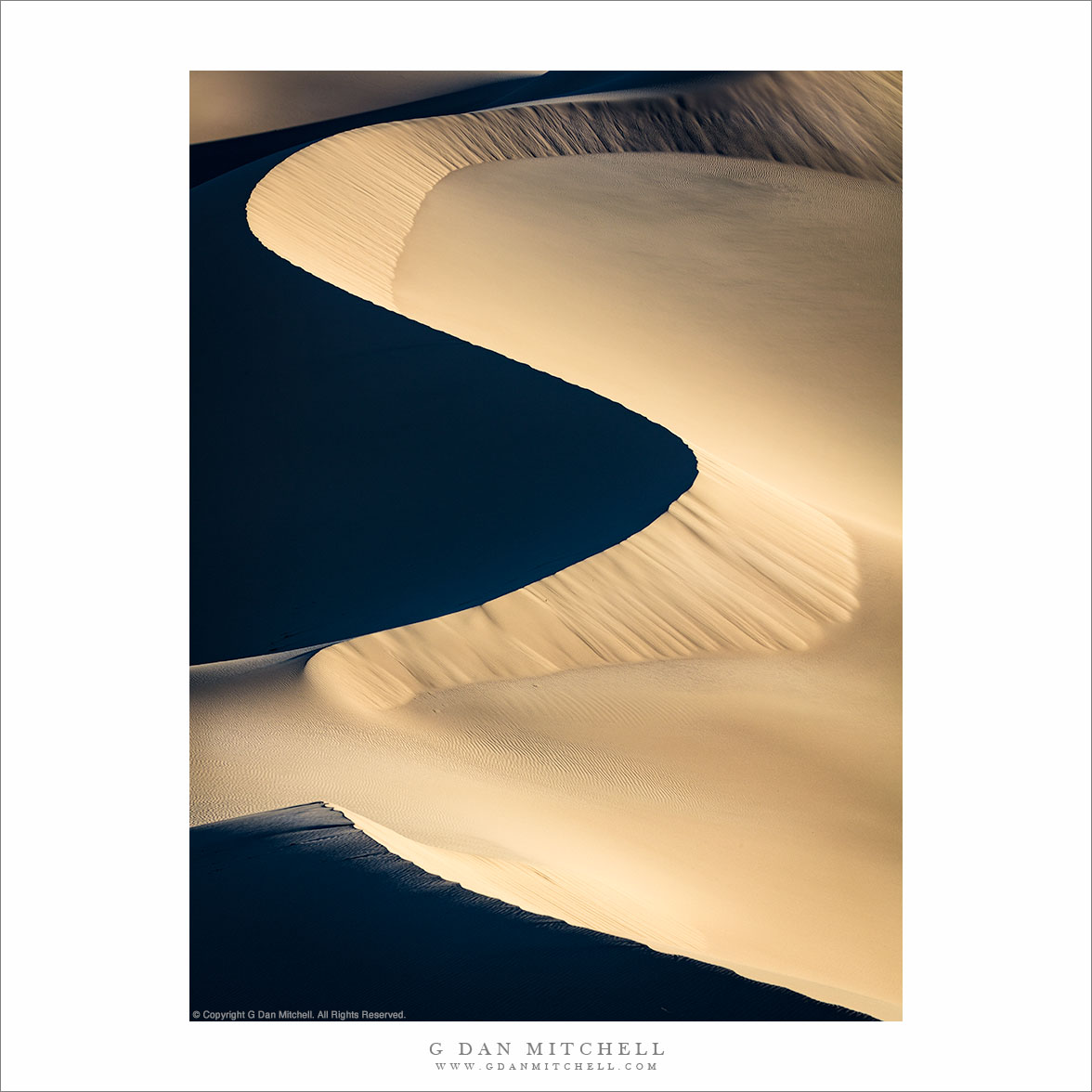
Plants, Dunes, and Sand Storm. © Copyright 2023 G Dan Mitchell.
A plant-covered sand dune with a sand storm in the background.
Perhaps this photograph is about the sand dunes. Perhaps it is about the raging sand storm. Perhaps it is about the plants on the small dunes in the foreground. Or about all of the above. The conditions were, by objective standards, pretty atrocious. A gale was whipping up the sand and blowing it toward the dunes and then up into the sky. You might wonder why the foreground seems relatively clear. The wind was blowing from slightly behind me and most of the dust was being picked from the dunes and blown away from me.
About two months earlier I had photographed in almost this exact spot, and the green transition of these plants on this visit was striking — back at the end of January they looked very dry. But now, even though there has not been all that much rain in this part of Death Valley in the interim, the seasonal greening was underway.
G Dan Mitchell is a California photographer and visual opportunist. His book, “California’s Fall Color: A Photographer’s Guide to Autumn in the Sierra” is available from Heyday Books, Amazon, and directly from G Dan Mitchell.
Blog | About | Twitter | Flickr | Facebook | Email
Links to Articles, Sales and Licensing, my Sierra Nevada Fall Color book, Contact Information.
Scroll down to leave a comment or question. (Click this post’s title first if you are viewing on the home page.)
All media © Copyright G Dan Mitchell and others as indicated. Any use requires advance permission from G Dan Mitchell.



